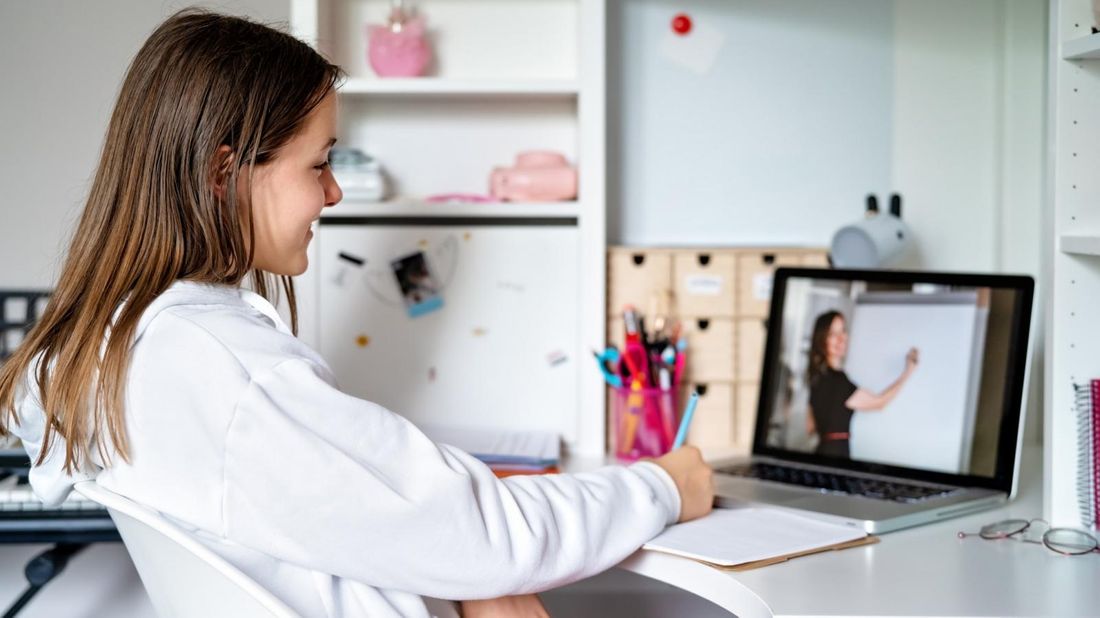6 Ways to Prep for Distance Learning Before Your Kids Start School

This fall, with COVID-19 still spreading, many school districts will once again implement distance learning or a hybrid model of at-home and in-class schooling. But unlike the first time around, which caught everyone off guard, you can be better prepared by learning from experience.
So if you’re looking for a few ideas on how to make round two of distance learning more productive and less stressful for you and your kids, here are a few simple upgrades that can help.
CREATE DEDICATED LEARNING SPACES FOR KIDS
One of the best things that you can do to help your child succeed with distance learning is to create a dedicated space where they can study without distraction. Ideally, this space will be separate and distinct from where they play or sleep.
A den or spare bedroom can be converted into a homeschooling area by adding a desk and a few other supplies. If you don’t have the extra space, your dining room table can work — but you may want to try getting creative with walk-in closets, garages or patios.
“The main thing is to remove as many potential distractions as possible,” says Devorah Heitner, author and founder of Raising Digital Natives. “If your child is doing their work right near their Lego sets or the TV, then there’s a built-in distraction to keep them from learning effectively.”
If you have more than one child, try to create individual spaces so that they can learn without distracting each other — particularly if their curriculum requires them to participate in Zoom calls or Google Meets. If this isn’t an option, pick up a pair of high-quality, noise cancelling headphones.
SET UP AN OFFICE AREA FOR PARENTS
While you’re dividing up the indoor real estate, keep in mind that moms and dads who work from home will also need a workspace of their own.
“The major challenge that every family is experiencing right now is trying to balance working from home and studying from home in limited space,” Heitner says. “Knowing that everyone has a quiet space to retreat to and concentrate is important.”
Your workspace, too, should be free from distraction and apart from your bedroom if possible. You want a space that will enable you to concentrate, even while you’re keeping an eye on the kids.
If you’ll be taking part in a lot of meetings or calls throughout the day, invest in quality audio accessories to help make sure your work activities don’t interfere with your child’s lessons and vice versa.
ADD A WI-FI BOOSTER
Depending on the size of your home, how many people you expect to use internet at once, and how intensive that use will be, Heitner suggests you consider investing in a Wi-Fi booster. These devices, which typically cost between $50 and $150, amplify your existing signal so it won’t let you down when you need it most.
To see if you'll need one, test your existing router. Try playing a video or signing onto a Zoom call on every device at once. You may find that the system slows down for everyone, or that the Wi-Fi is weaker in a certain part of the home.
INSTALL A PRINTER
If managing the amount of time kids spend on screens is a concern, here’s an idea: Use your printer.
Worksheets, reading materials, handouts and many other assignments can all be printed and completed on paper so that your child isn’t spending hours at a time staring at a screen.
“Especially for younger kids or kids with any kind of reading disability like dyslexia, who can get eye fatigue from looking at a screen all day, moving things to paper where possible can be beneficial,” Heitner says.
PUT UP A PHYSICAL CLOCK AND CALENDAR
Most classrooms have a clock and calendar on the wall. The clock helps students orient themselves throughout the day and understand when periods are beginning or ending, and the calendar helps them plan their assignments and think ahead.
“Not all families have a clock or calendar in every room — for many of us, our phones are our primary way of telling time,” Heitner says. “But if your child is engaged in their reading or studying, you don’t want them pulling out their phones every five minutes to check the time — that’s one more distraction that they don't need.”
INCLUDE SOMETHING INSPIRATIONAL
In preparing your child’s learning space, Heitner also recommends incorporating something that inspires. Anything from books they love to a view out a window can spark creativity and curiosity.
Most of all, don’t feel you have to re-create the classroom experience at home, Heitner stresses. These aren't normal times, you (likely) aren’t a teacher, and your child knows that you’re doing your best.
Feel better about taking action on your dreams.
Your advisor will get to know what’s important to you now and years from now. They can help you personalize a comprehensive plan that gives you the confidence that you’re taking the right steps.
Find your advisor




